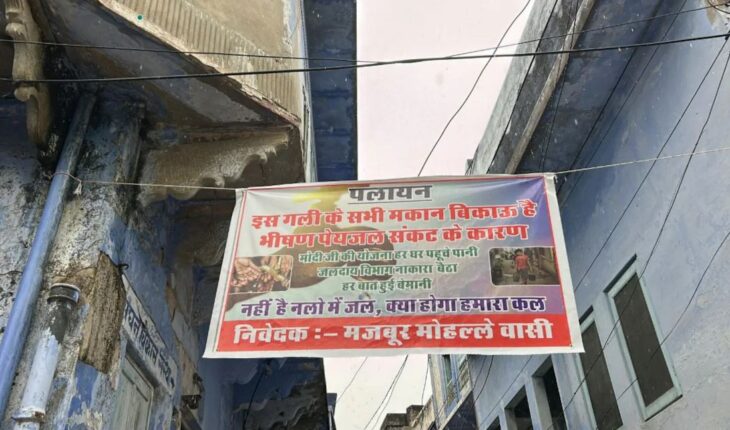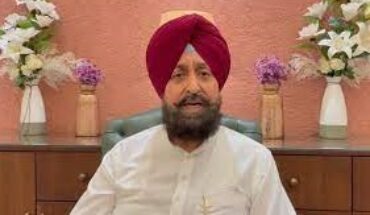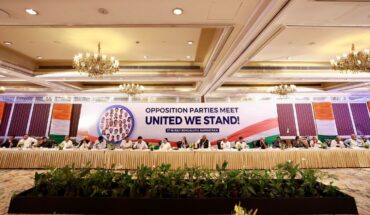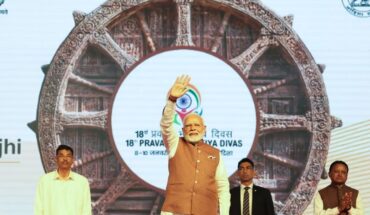Sambhar, a world fame name for its salty water lake and as India’s largest saline wetland, also designated as Ramsar Site (recognized wetland of international importance), enticing not only the tourists, but also thousands of migratory birds from northern Asia and Siberia from November to February, came into hot news last week not for its beauty’s attraction, but due to a strange step of its villagers to raise their grievances and attract the attention of the Rajasthan government towards the difficulty they face due to acute shortage of water not enough even to quench their thirst in this scorching heat days of May and June.
The villagers allege that the water supply services are so bad that they get water for only about 25-30 minutes every 72 to 96 hours. On the other hand, the central government claims that under Jal Jeevan Mission (JJM) – ‘Har Ghar Jal’, it is implementing the provision of potable water to every rural household of the country, through functional tap water connection i.e. at a service level of 55 litre per capita per day (lpcd).
The finance minister of India, while replying a budgetary question on 17 march,2025 stated , “Since August 2019, Government of India in partnership with States is implementing Jal Jeevan Mission (JJM) – ‘Har Ghar Jal’ to make provision of potable water to every rural household of the country, through functional tap water connection i.e. at a service level of 55 litre per capita per day (lpcd), of prescribed quality (BIS:10500), on regular and long-term basis.”
Why are the governments failing to supply potable water at level of 55 litre per capita per day (lpcd), as provisioned and that too why not on a daily basis?
Facing the brunt of water scarcity, some Sambhar inhabitants have pasted posters on their houses as “House on Sale” and even on the entry points of the streets they displayed the banners showing – ‘Bhishan payjal sankat ke karan, is gali ke sabhi makan bikau hain’ (Due to severe drinking water problem, all the houses in this street are for sale), as per media reports.
Times Now on June 4, quoting a resident, writes- “The angry residents held a meeting at Charbhuja Mandir and Dadudwara and took a big decision—to sell their houses and leave Sambhar. ‘For sale’ posters have been pasted on the houses in the streets. Local people say that despite repeated complaints, the water supply department does not pay heed to them.”
Quoting Gautam Singhania, local BJP councillor from the area who represents ward 23, NDTV on June 3, states–“For the past 7 years now, we have no dedicated water tank that will supply water to our homes via pipelines. About 200 people from this ward got together and said it’s better to migrate from here. If there will be no water, then what is the point of living here? The water works department is not worried, we have put up posters on every street and these have come up at 150 homes. In the last two years, people have been moving out but this water crisis has come to a head this summer.”
There were about 3,500 people here, but that number now stands at 1700, said the councillor, adding that even those left behind plan to move out soon.
Media reports state that Vidhyadhar Chaudhary, Congress MLA from the area, claimed that he had also raised this issue in the Vidhan Sabha on January 31st.
Now the question arises -Despite Central government’s ‘Har Ghar Jal Yojana’ (Water to every house scheme), which was to be implemented before the end of year 2024, why the residents of Sambhar and other areas are facing the acute shortage of even the potable water? Why the completion target of the scheme of supplying potable water as per Jal Jeevan Mission was not fulfilled as it was promised to be completed upto 2024?
Stating the Jal Jeevan Mission ‘A Milestone in India’s Rural Water Revolution,’ a central government’s PIB release on 14 AUG 2024 states- “The Jal Jeevan Mission (JJM) was launched by Prime Minister Narendra Modi on August 15, 2019, with the ambitious goal of providing tap water supply to every rural household by 2024. At the time of its inception, only 3.23 crore (17%) of rural households had tap water connections. The mission aims to bridge this gap by providing nearly 16 crore additional households with tap water by 2024, ensuring the functionality of existing water supply systems, and directly benefiting over 19 crore rural families. This initiative is intended to reduce the rural-urban divide and enhance public health.”
Replying a question in Parliament on current status of Jal Jeevan Mission (JJM), Finance Minister during her budget speech 2025- 26, presented the data as on 17 March 2025, which shows that the target of JJM was still lagging behind the target of 2024 and so she announced extension of Jal Jeevan Mission until 2028 with an enhanced total outlay.
She added that at the start of the Mission, only 3.23 Crore (16.7%) rural households were reported to have tap water connections. So far, as reported by States/ UTs as on 17.03.2025, under Jal Jeevan Mission (JJM) – Har Ghar Jal around 12.30 Crore additional rural households have been provided with tap water connections. Thus, as on 17.03.2025, out of 19.36 Crore rural households in the country, more than 15.53 Crore (80.20%) households are reported to have tap water supply in their homes and works for the remaining 3.83 Crore households are at various stages of completion as per saturation plan of the respective State/ UT.
Opposition raises questions
Rajasthan State Congress president and former minister, Govind Singh Dotasra @GovindDotasra on his x account on June 9, 2025 comments, “The BJP government could neither provide irrigation water to the farmers nor it is able to provide drinking water to the common people in this scorching heat. The entire state, including Sanganer, the constituency of Chief Minister Bhajan Lal ji, and Jodhpur, is facing severe water shortage.
When people in cities are worried about every drop of water, what would be the situation in the desert and far-flung areas. That too when the condition of the dams of the state is not good.”
Dotasra adds, “Out of the total 691 dams in the state, 368 dams are almost empty, there are 176 dams where some water is left and there are only 7 dams where there is full water. So far, only 46% water has been stored in these 691 dams of the state, which is almost half compared to this period last year.”
Dotasra warns the government of the crisis to come, “Despite the water crisis, the BJP government of the state is completely inactive, if a concrete plan for water management is not made in time, the water crisis in many districts can deepen further.”
Congress Member of Parliament, since 2014 continuously, from Churu, Rajasthan, Rahul Kaswan @RahulKaswanMP 0n June 7, challenging the figures of JJM in his Churu Lok Sabha constituency says, “Under Jal Jeevan Mission, the officials have uploaded false figures of 70 percent work completion in Churu district on the portal, whereas the situation on the ground is different.
The works approved in 2019 under JJM in Churu, Sujangarh, Ratangarh and Sadulpur have not been completed yet. Due to delay and indifference, there has been a deviation in the budget, due to which the works of JJM in the above tehsils (like- in some places new tanks could not be built, in some places tanks have been built but are not being connected to the pipeline) are in limbo. Hence, we said that despite the work of approved tanks not being completed, action should be ensured by investigating against the officials who uploaded wrong data on the portal.
Kaswan adds, “Many flaws have come to light in the preparation of DPR of the works to be done under JJM in the area. Hence, we have asked the officials to hold a meeting regarding JJM in Churu and ensure that the works are done with proper planning; so that the common people can get the benefits of the scheme properly.”
Will the Government succeed to achieve the JJM target even upto 2028?
After central government’s failure to achieve the Jal Jeevan Mission target to be completed upto 2024, it has extended the span for the next four years upto 2028. But, if we analyse the progress of JJM in three months from 17 March, 2025 to 13 June 2025 the progress of this mission seems very slow and it will be impossible to achieve the target even upto 2028, if it runs at the same speed. As on 17 March the achievement was 15.53 crore and as on 13 June it is 15.65 crore as per JJM web portal. In this way only 12 lacs new taps with water supply were installed in these three months, giving an average figure of 4 lacs per month, whereas to achieve the target upto the end of 2028 the average of 8.83 lacs water supply taps will have to be installed within remaining 42 months from June 25 to December 2028.
Why does the government fix such targets, which it cannot complete in time? Is the government lethargic or there is scarcity of funds? The voice and grievance of the inhabitants of Sambhar, who are ready to evacuate their ancestral village, should not only be heard with a soft heart, but also should be resolved. Rajasthan and the central government should take the potable water crisis on priority. Will they? (Ground Post).
Jag Mohan Thaken is a Senior Journalist, Columnist & Political Analyst, views are personal





